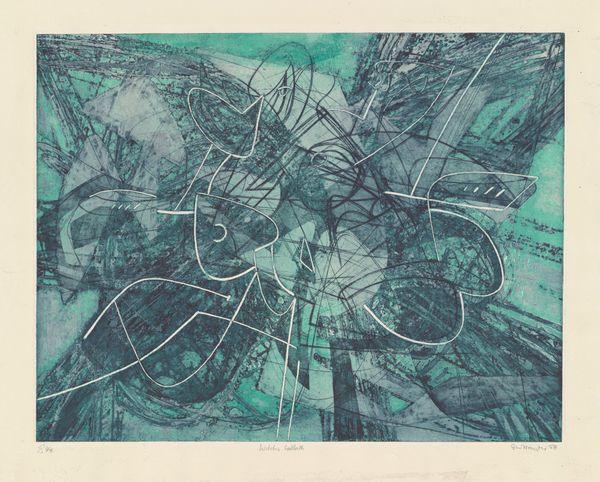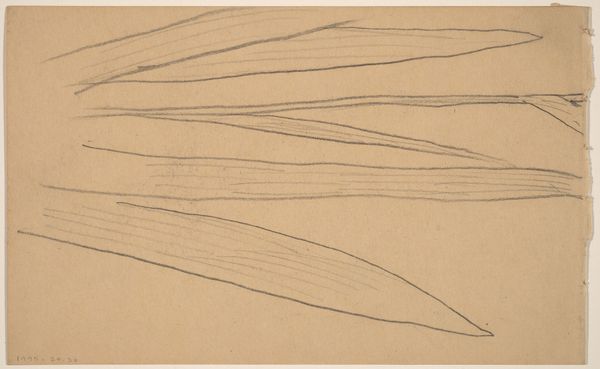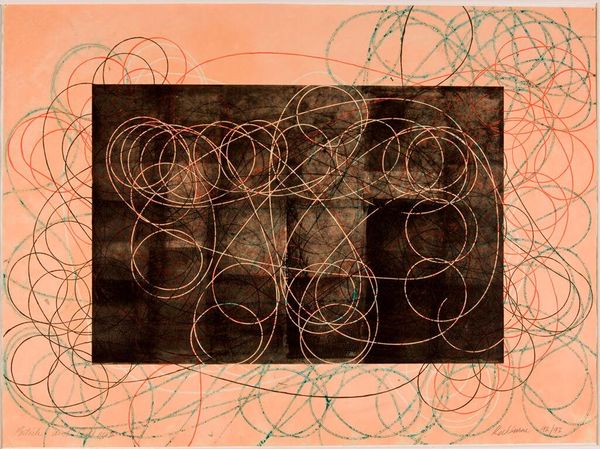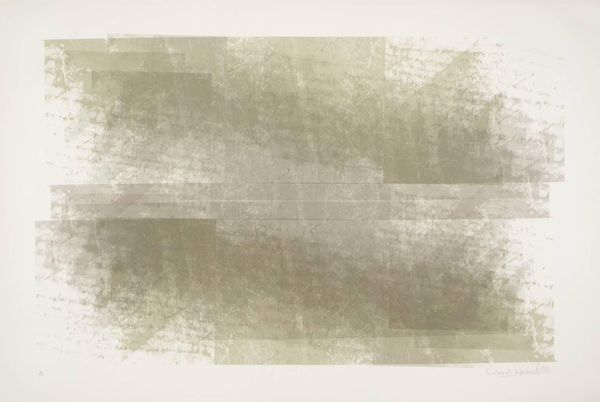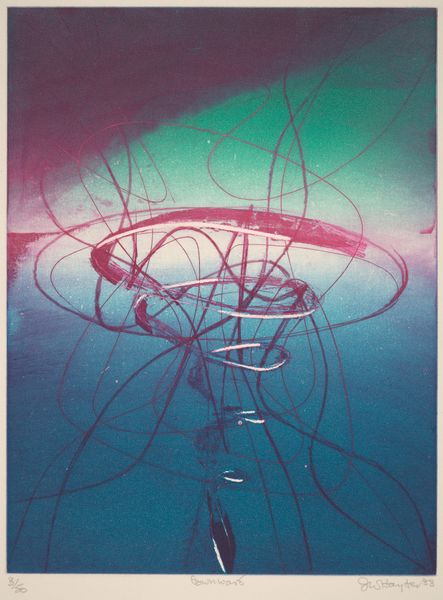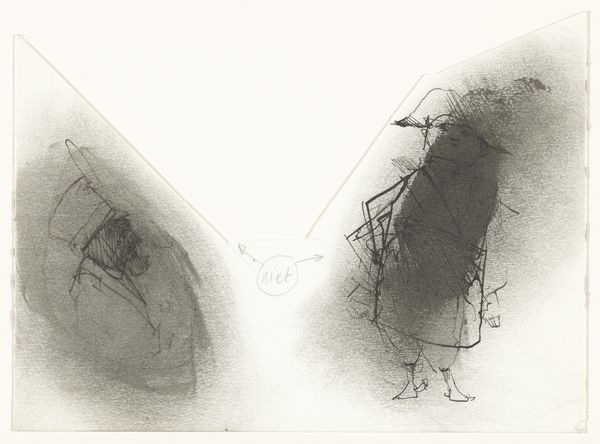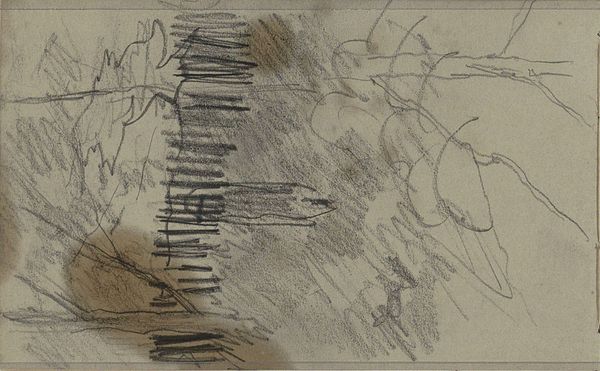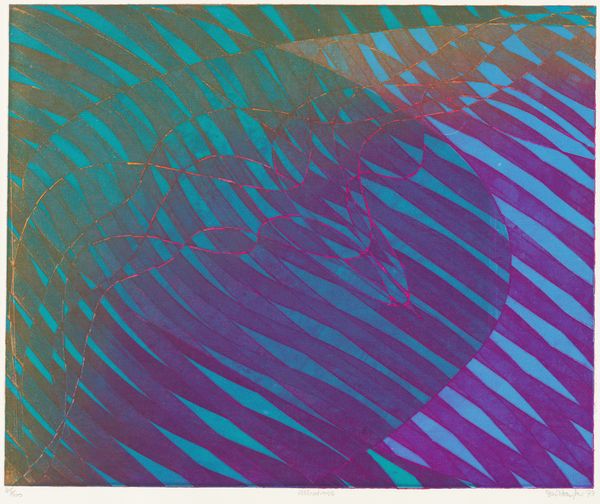
print, etching
# print
#
etching
#
form
#
abstraction
#
line
Dimensions: plate: 28.3 x 40.6 cm (11 1/8 x 16 in.) sheet: 48.6 x 61.3 cm (19 1/8 x 24 1/8 in.)
Copyright: National Gallery of Art: CC0 1.0
Curator: We're looking at "Le port," or "The Harbor," an etching made in 1986 by Stanley William Hayter. Editor: My initial reaction is chaos, or perhaps controlled chaos. There's a very dark, almost ominous mass dominating the center, surrounded by these frantic, energetic lines. Curator: Hayter was deeply involved in avant-garde circles and played a pivotal role in reinvigorating printmaking, particularly etching. His studio, Atelier 17, became a hub for experimentation, attracting artists from all over the world. Editor: And it’s evident here. Look at the way the linear structure pushes against any clear subject matter. There is this brooding shape and what seem like horizon lines scratched above, yet everything remains intangible and floating. The lines weave around this void; is this an attempt at containment? Curator: Hayter's interest was primarily in process and form. He developed techniques like simultaneous color printing and explored the expressive potential of the engraved line, almost liberating the medium. He rejected a singular, fixed perspective. Editor: I agree, the overlapping lines definitely give the sense of multidimensionality, even movement. And the almost industrial feeling, that grayed black set against a soft rose sky evokes, adds tension. What can we say about abstraction at the time? Curator: Abstraction offered a form of social commentary by subverting conventional modes of representation. Hayter, in particular, used it to create spaces for exploration— psychological as well as artistic. His goal was to challenge the established order. Editor: It seems the formal choices he made create a destabilizing viewing experience. It rejects closure in favor of potential. Curator: Absolutely. “Le port” presents itself as not merely a view of a harbour, but a dynamic realm where artistic vision can alter our way of processing visual information, almost like shifting geopolitical boundaries. Editor: This experience truly underscores how the interplay of formal elements such as line, color, and texture, can powerfully disrupt our sense of stability and prompt a more dynamic response.
Comments
No comments
Be the first to comment and join the conversation on the ultimate creative platform.

